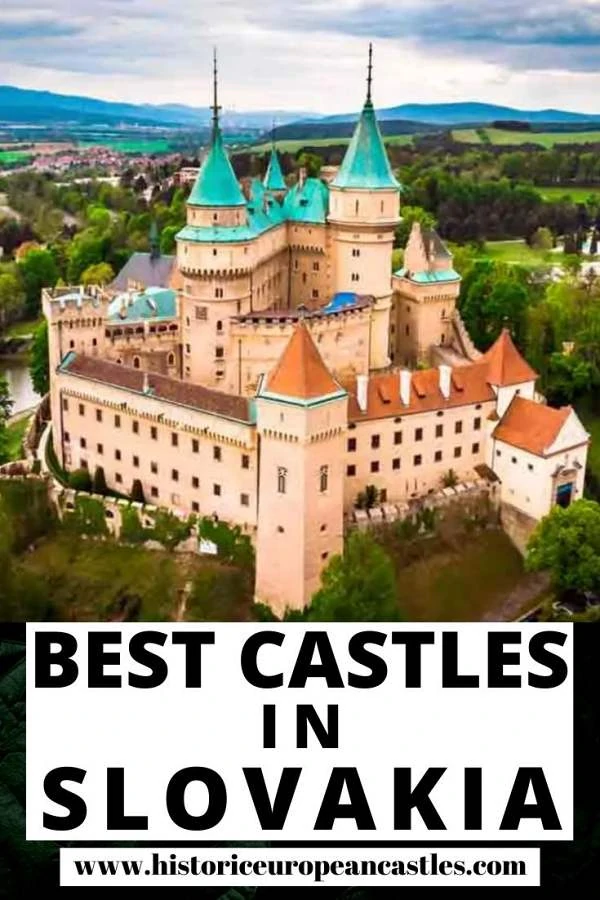Best Castles in Slovakia
When you think of Slovakia, you more than likely think of luscious mountains, breath-taking lakes and small villages that are bursting with traditional culture – yet, the country is also filled to the brim with an abundance of gorgeous castles, many of which’s history dates back to pre-historic times.
This list will highlight the best castles that the country of Slovakia has to offer, the key things to know and see, as well as practical information, such as the location and opening times.
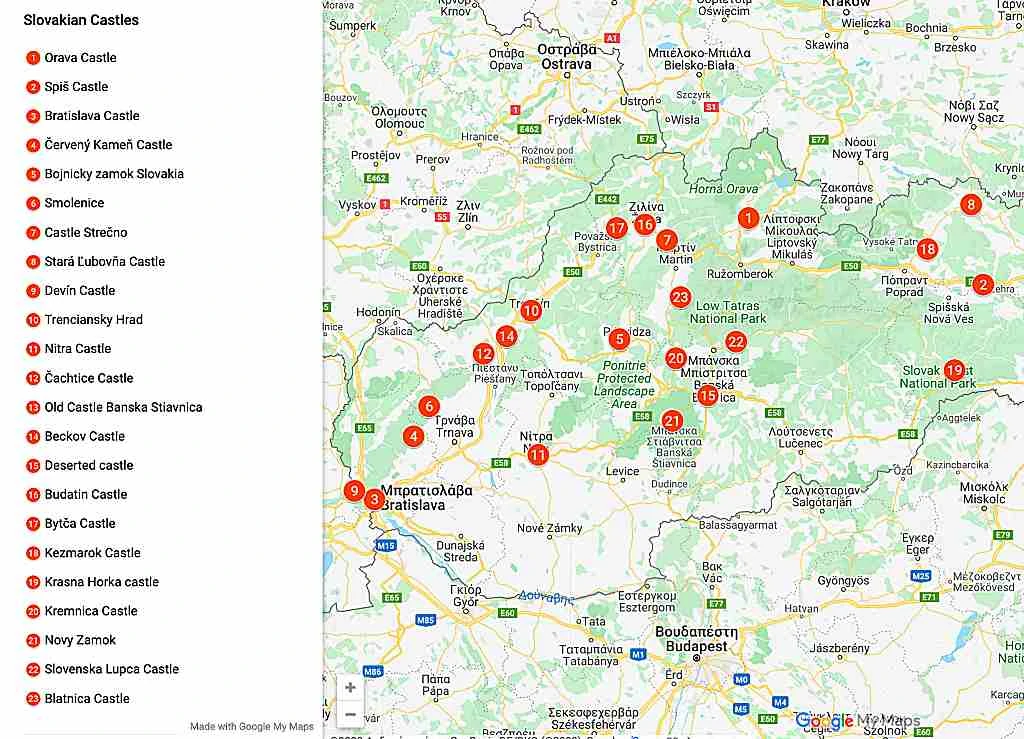
23 Famous Castles in Slovakia you Must Visit
1. Orava Castle
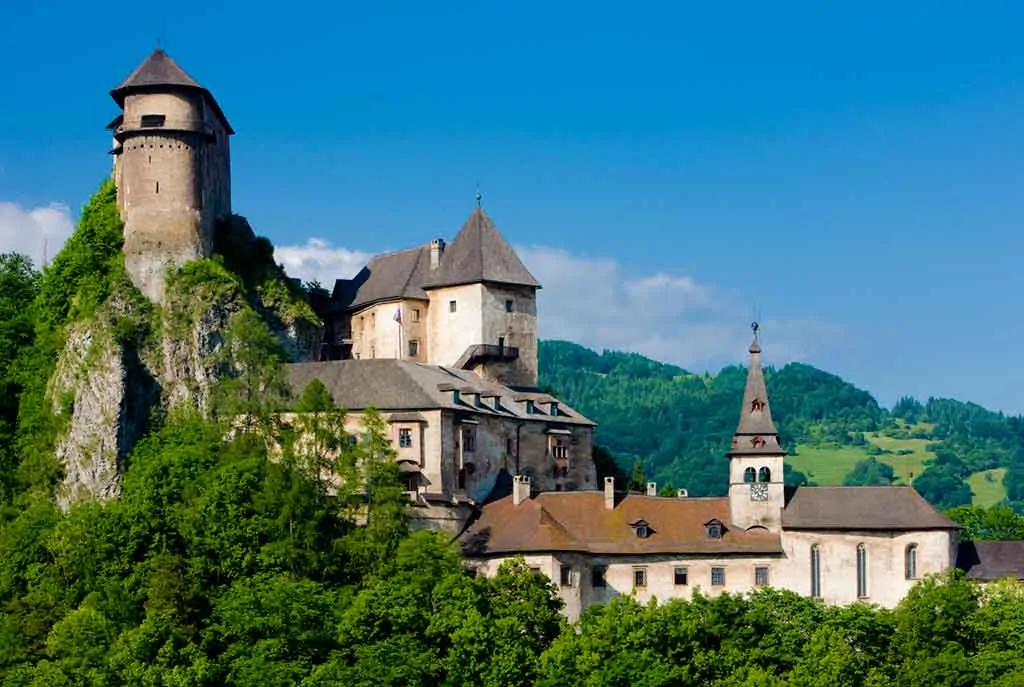
Situated on a dramatic hilltop towering above the Orava river in a Slovakian village, Orava Castle is considered to be one of the country’s most magnificent castles.
Its life began in the year 1267, where the initial wooden rampart became a stronger fortification, whereby the upper floors were wooden, and the ground floor was stone.
Today, many visitors come to the castle to admire its beautiful architecture, that merges Romanesque, Gothic, and Renaissance features in a unique style; it was also the location for many scenes of the 1922 film, Nosferatu.
Where: Oravsky Podzamok
When: 1267
Open for visit: Yes, check here for more information.
2. Spis Castle
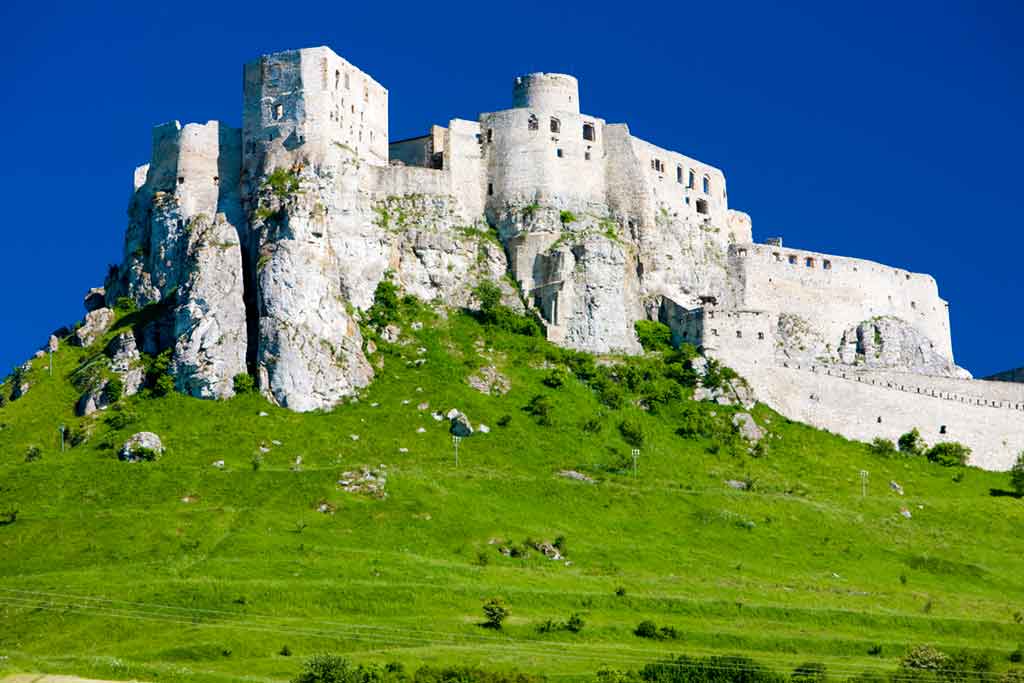
Built in the 12th century on the grounds of an even earlier castle, Spis Castle is recognized as the historical political, administrative, economic and cultural center of Szepes County.
Prior to the year 1464, the castle was owned by the Kings of Hungary, before a series of noble families overtook. The Castle has many Romanesque and Gothic architectural features to it, and throughout the centuries, new designs and extensions have been added in tune with the styles of the time.
Today, visitors are captivated by the layers of history that the castle projects.
Where: Spis
When: 12th Century
Open for visit: Yes, check here for more information.
3. Bratislava Castle

Situated in the center of the thriving Slovakian city of Bratislava lies the Bratislava Castle, a hub of power throughout the centuries, ranging from early prehistory, whereby it played a role of fortification and a sort of acropolis, all the way to the Renaissance era, whereby it was used as a seat of power for an array of different leaders and noble people.
The castle today is home to an unbelievable number of historical artifacts and features, that range from all regions of the castle’s long and impressive heritage.
Where: Bratislava
When: Earliest recorded history is the Prehistoric times
Open for visit: Yes, check here for more information.
4. Cerveny Kamen

This thirteenth-century castle is buried deep within the luscious green scenery of the Little Carpathians near the village of Casta and looks like it has jumped straight out of a fairy tale.
During the thirteenth century, a stone castle was built as part of the Kingdom of Hungary’s frontier defense castles, which ranged from Pressburg to Zilina.
However, during the first half of the 16th century, the castle was entirely rebuilt as a fortress, which was completely finished in the year 1588 whereby the Palffy family took over.
Where: Casta
When: 13th-century origins
Open for visit: Yes, check here for more information.
5. Bojnice Castle
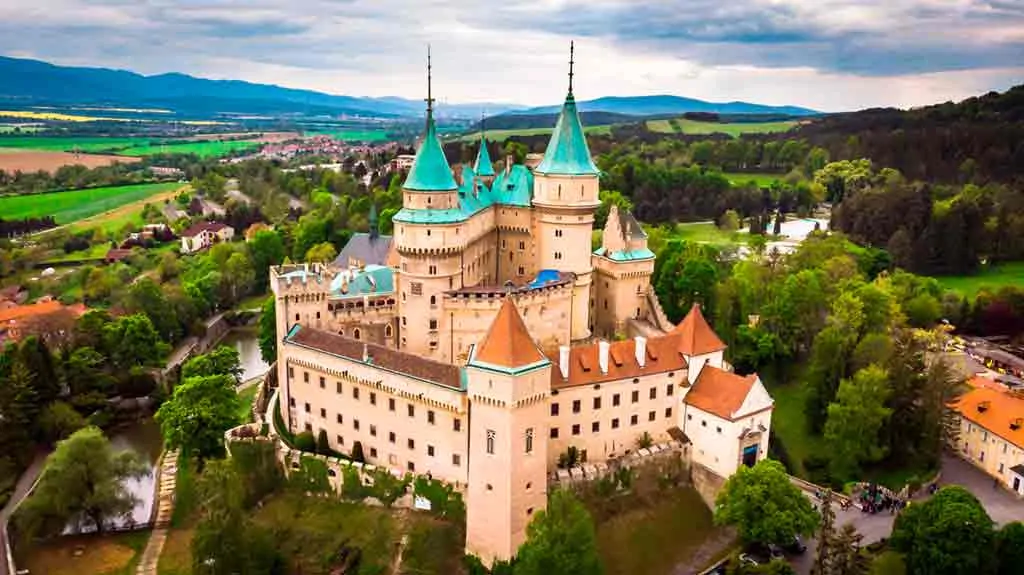
This magnificent Medieval Castle is located in the town of Bojnice and is built in the style of Romanesque, although it does bear some original Gothic and Renaissance features, which stem from the 12th century.
It is one of the most frequently visited castles in the whole of Slovakia, as it truly looks as though it has been torn from a fairy tale story. It was first mentioned as early as the year 1113, whereby it was written in a document held at the Zobor Abbey.
The Castle has changed shape over the years; it originally started as a wooden fort, before becoming the architectural masterpiece that it is today.
Where: Bojnice
When: 12th century
Open for visit: Yes, check here for more information.
6. Smolenice Castle
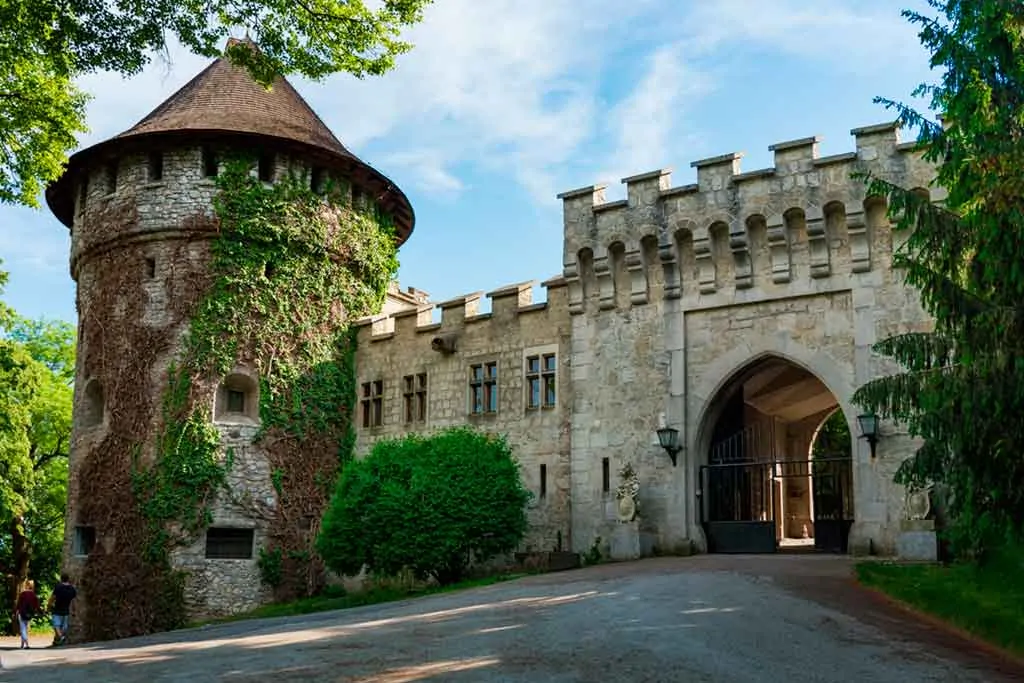
Situated on the eastern edge of the Little Carpathians, lies the wonderful Smolenice Castle, which is located in the picturesque town of Smolenice in the West of Slovakia.
Originally built in the 15th century, the castle was later destroyed during Rakoczi’s War of Independence and the Napoleonic wars.
The castle was also badly damaged in the spring of 1945, during the Second World War, and it was then taken under state control; little of the original castle remains, but it still exists as an interesting example of history.
Where: Smolenice
When: 15th century
Open for visit: Yes, check here for more information.
7. Strecno Castle
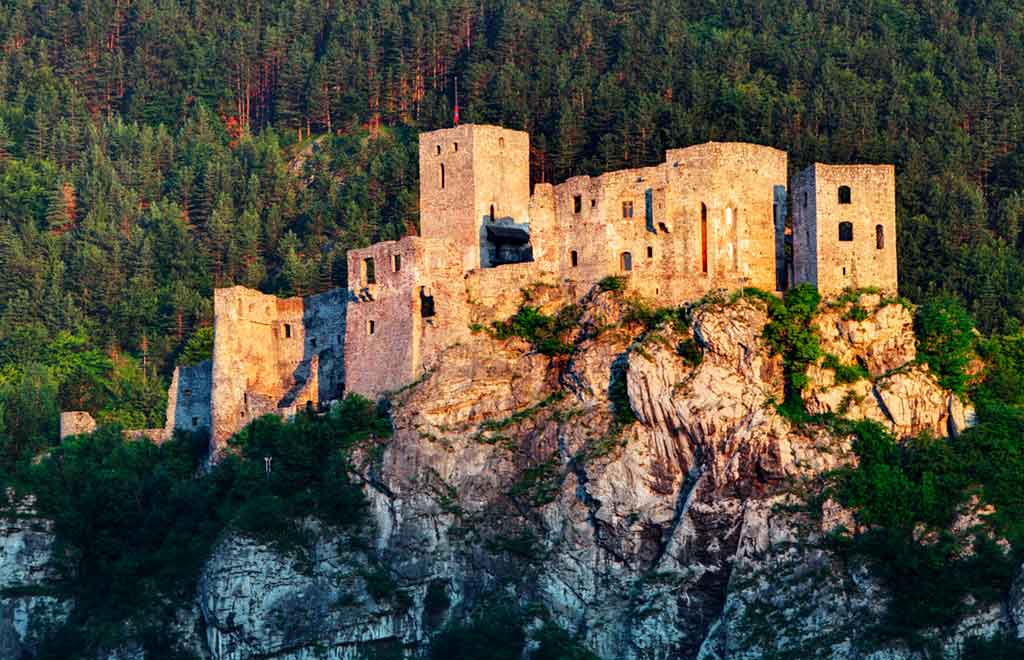
Strecno Castle is located near to Zilina, and is a reconstructed ruin of an original medieval castle; it is located on a large, jagged cliff, and towers above the land below, giving it a very imposing and powerful appearance.
The original stone castle was first mentioned in the year 1316, but now it belongs to the national cultural heritage of the Slovak republic.
During the Renaissance, the castle was in its prime, whereby many features were implemented for the purpose of withstanding military attack; however, centuries later, the castle fell into a steep decline.
Where: Near to Zilina
When: 1316
Open for visit: Yes
8. Stara Lubovna Castle

Nestled in the north-east of Spis lies the magnificent Stara Lubovna Castle, which boasts a rich and colorful history, dating back to the turn of the 13th century.
The castle has been the place where Polish coronation jewels were hidden, as well as where key rulers have met and discussed important issues.
There was an enormous fire at the castle in the year 1553, and it was reconstructed into a more modern Renaissance fortress.
Today, there is a museum exhibition, as well as some wonderful gardens.
Where: Spis
When: 13th century
Open for visit: Yes, check here for more information.
9. Devin Castle
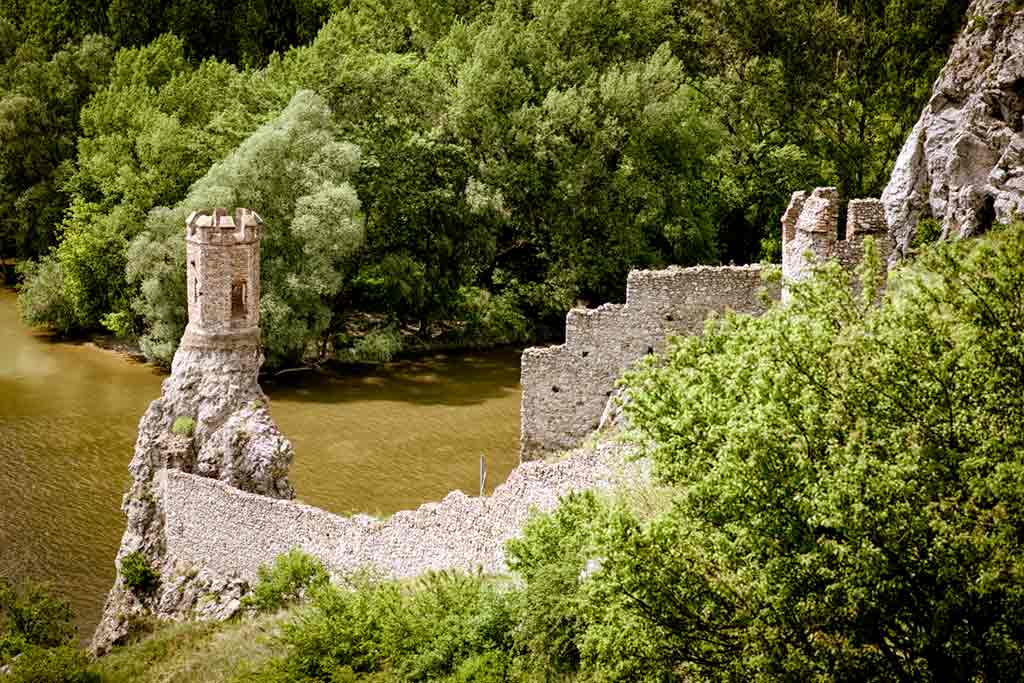
One of Slovakia’s most fascinating castles is Devin Castle; the site of the castle has been settled since the Neolithic Age, and fortified since the Bronze and the Iron Ages, before later being settled by the Celts and Romans, giving it a vast and exciting heritage.
The castle is located on the border between Slovakia and Austria, and its position has been vital for its role as a watchtower and fortification over the years; it has the advantage of watching over a key trading route along the Danube as well.
Today, visitors are captivated by the castle’s romantic exterior, as well as the impressive views and rich heritage that it offers.
Where: Devin
When: Origins in the Neolithic era
Open for visit: Yes
10. Trenciansky Hrad
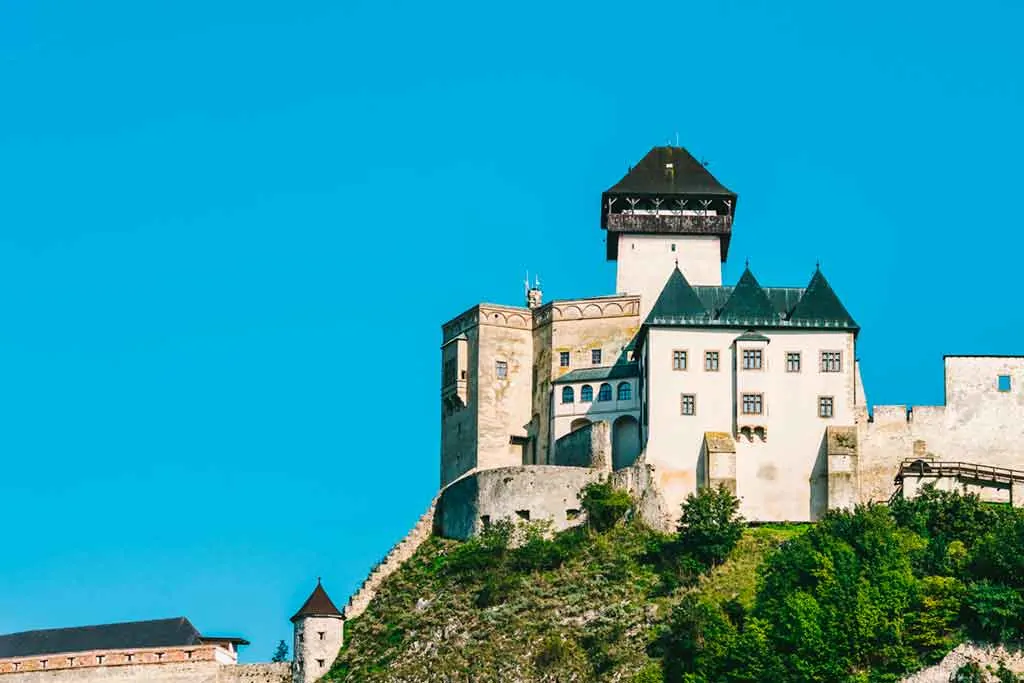
Dominating the skyline of the historical center of Trenciansky Hrad lies the castle of Trenciansky Hrad; the origins of the foundations of this castle date back to the Bronze Age.
This is the perfect place to spend a day, as you can explore the beautiful original stone fortifications that date back to the 11th century.
There are also many defensive towers still in place, as well as pointed roofs and some original features. The castle itself is beautiful, and there are many key photo spots!
Where: Trenciansky Hrad
When: 11th century
Open for visit: Yes
11. Nitra Castle
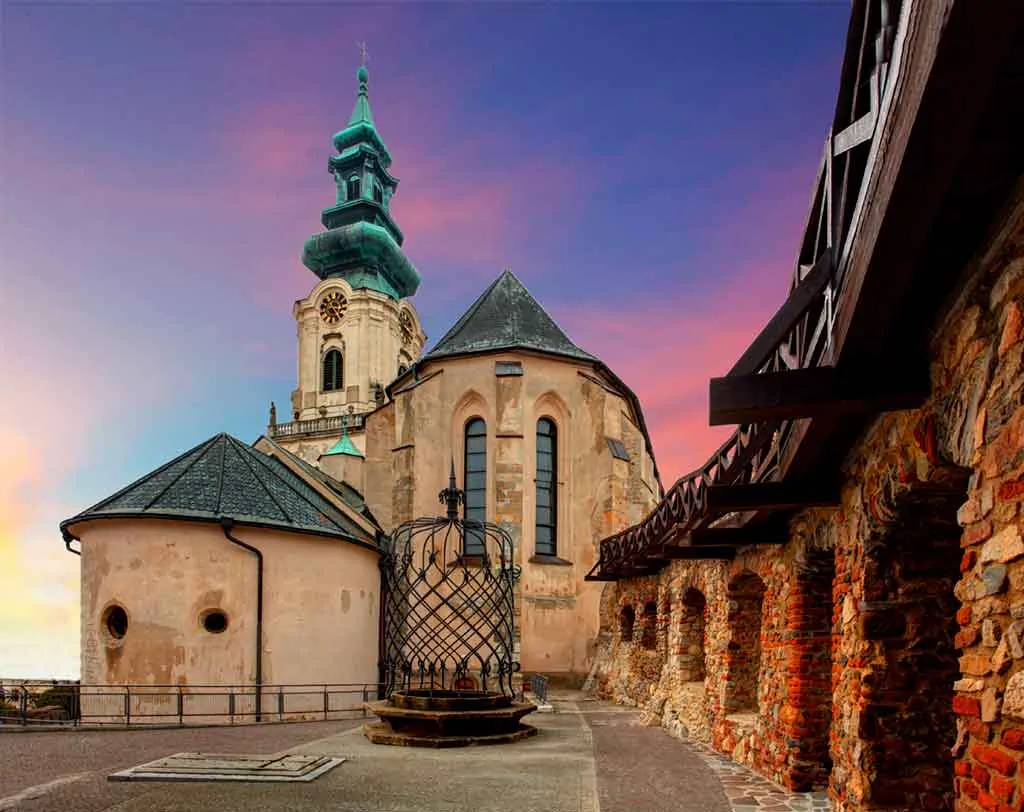
The origins of the foundations of Nitra Castle date back to the Bronze Age, before being settled by the Celts in the 1st century BCE; many later settlers came to the site in later centuries.
The castle that is ruinous today, was originally built in the 11th century and was built on the site of an earlier fort. Interestingly, the oldest part of the castle is the Romanesque Church of St. Emmeram.
There are many Gothic features to the castle, as well as many Late Baroque features, which were largely added in the 18th century.
Where: Nitra
When: 11th century
Open for visit: Yes, check here for more information.
12. Cachtice Castle
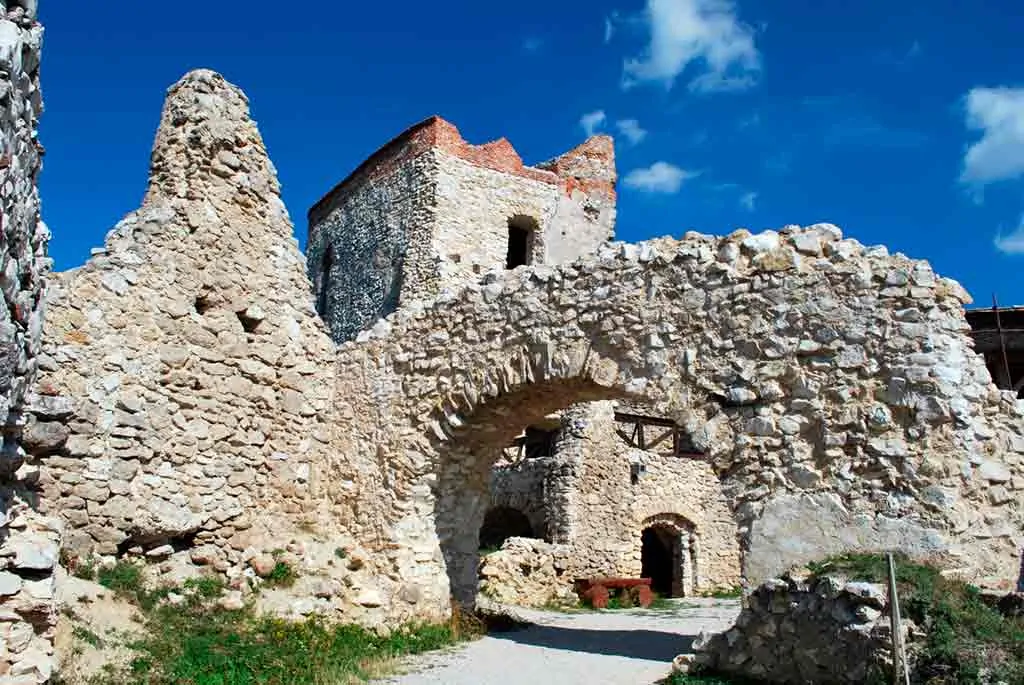
Nestled upon a jagged hill that features an array of rare plants lies the Cachtice Castle, a mid-13th century castle built by Kazimir from the Hont-Pazmany gens.
The castle is famous for an array of different reasons, but primarily for being the residence and later the prison of Countess Elizabeth Bathory, who is renowned for being the world’s most prolific female serial killer.
The castle began life as a Romanesque design, though it was later turned into a Gothic castle, whereby its size increased significantly in the 15th and 16th centuries before a Renaissance renovation occurred in the 17th century.
Where: Cachtice
When: 13th century
Open for visit: Yes
13. Old Castle Banska Stiavnica
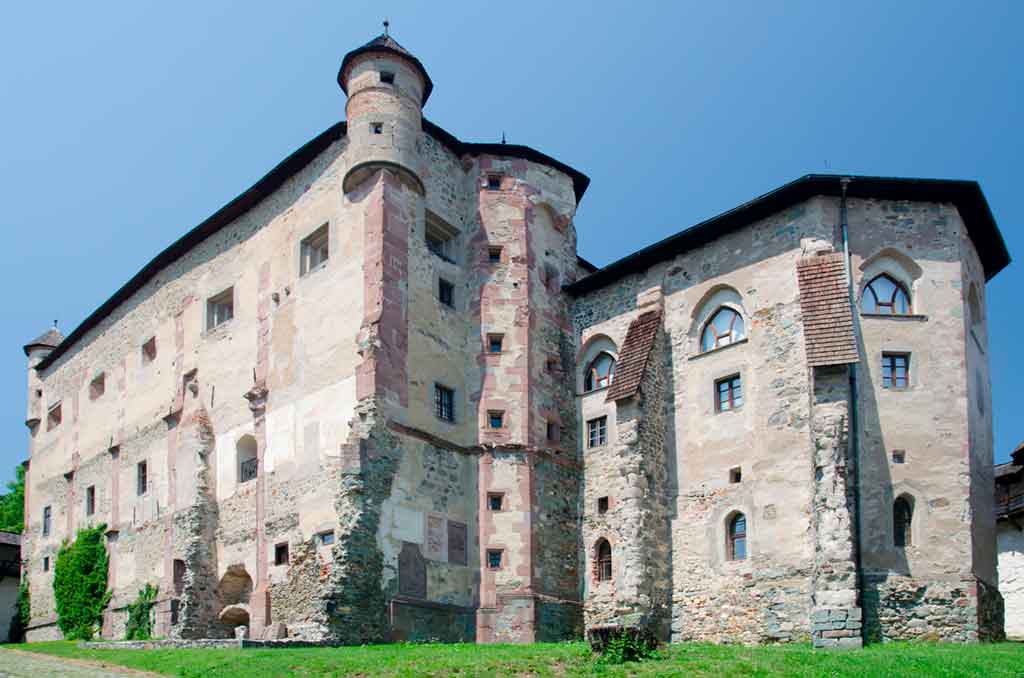
Known as Stary Zamok Castle, or otherwise known as the Old Castle, has had a varied and long existence. It used to be a church, before being renovated into a fortress during the era of the Turkish thread.
The origins of this castle date back to the 13th century, when the Church of Saint Mary was built on the Paradajs Hill, alongside a cemetery.
The castle has undergone a large variety of stylistic changes over the years, ranging from medieval to Gothic, all the way to Baroque, which it appears as today.
Where: Banska Stiavnica
When: 13th century
Open for visit: Yes, check here for more information.
14. Beckov Castle
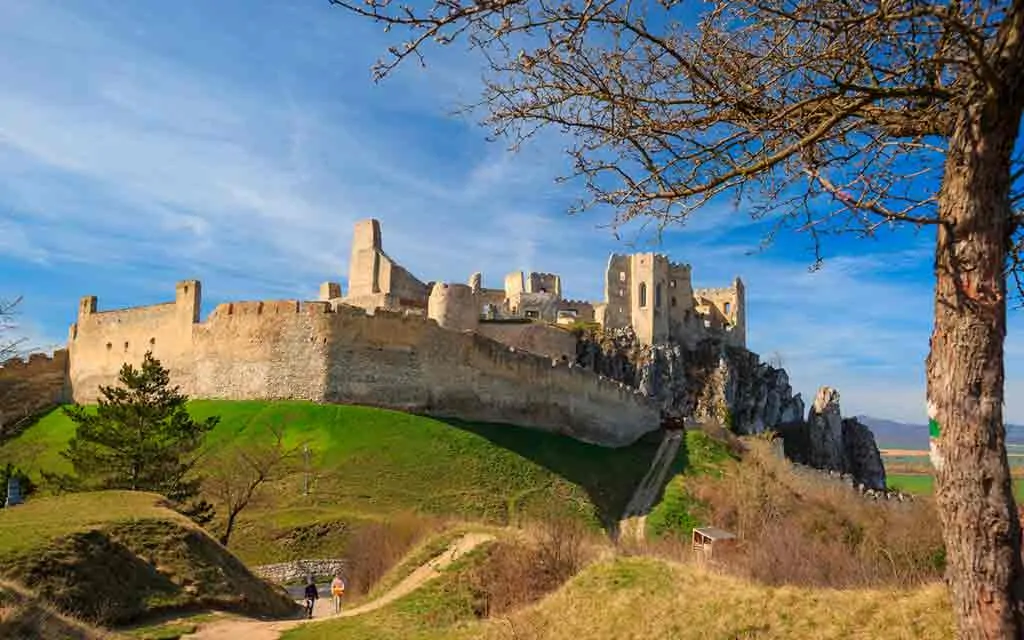
Situated near to the village of Beckov in Nove Mesto nad Vahom District Trencin Region in the Western side of Slovakia, lies Beckov Castle, a 13th-century fortification built to protect the borders of the Kingdom of Hungary.
The castle has changed shape over the years it has existed, ranging from a moated drawbridge in the 16th century, before becoming a prison in the 17th century.
Today, the castle has been a national cultural monument since 1970, and is cherished for its extensive history.
Where: Nove Mesto nad Vahom
When: 13th century
Open for visit: Yes, check here for more information.
15. Pusty Hrad
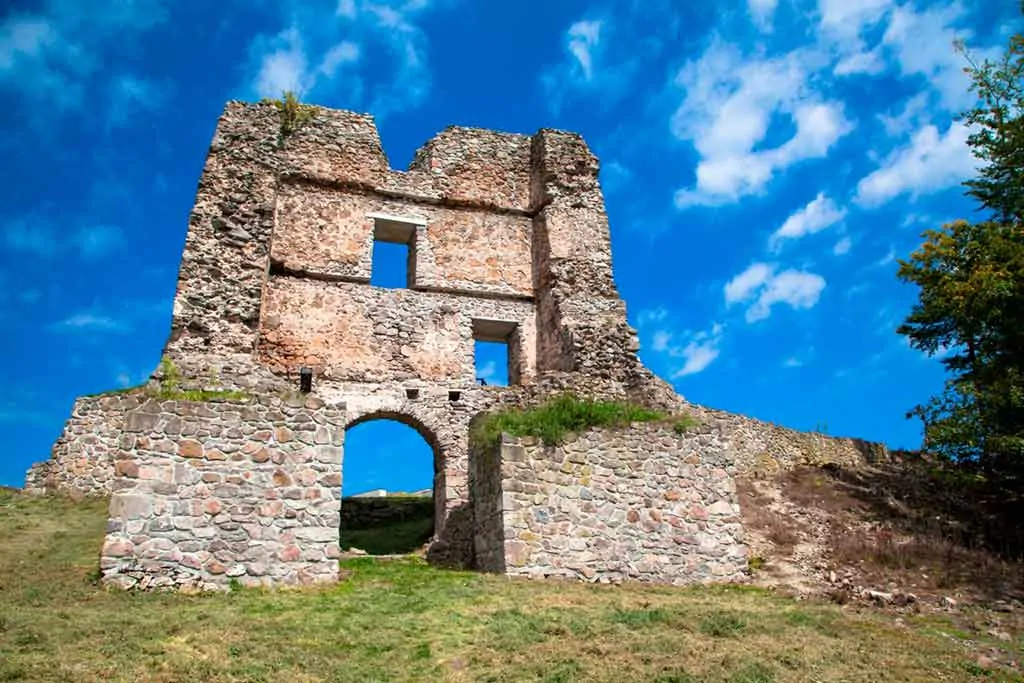
This ruinous castle is located on a forested hill in Zvolen, which is situated in the center of Slovakia.
The castle boasts an enormous vicinity spanning 76,000 meters squared, which makes it one of the largest medieval castles in the whole of Europe.
The name ‘PusyHr Hrad’ means ‘deserted castle’, and has attracted settlers since the late Stone Age, otherwise known as the Baden Culture.
The castle played a pivotal role throughout up until the 15h century where it declined and lost its importance.
Where: Zvolen
When: 13th century
Open for visit: Yes
16. Budatin Castle
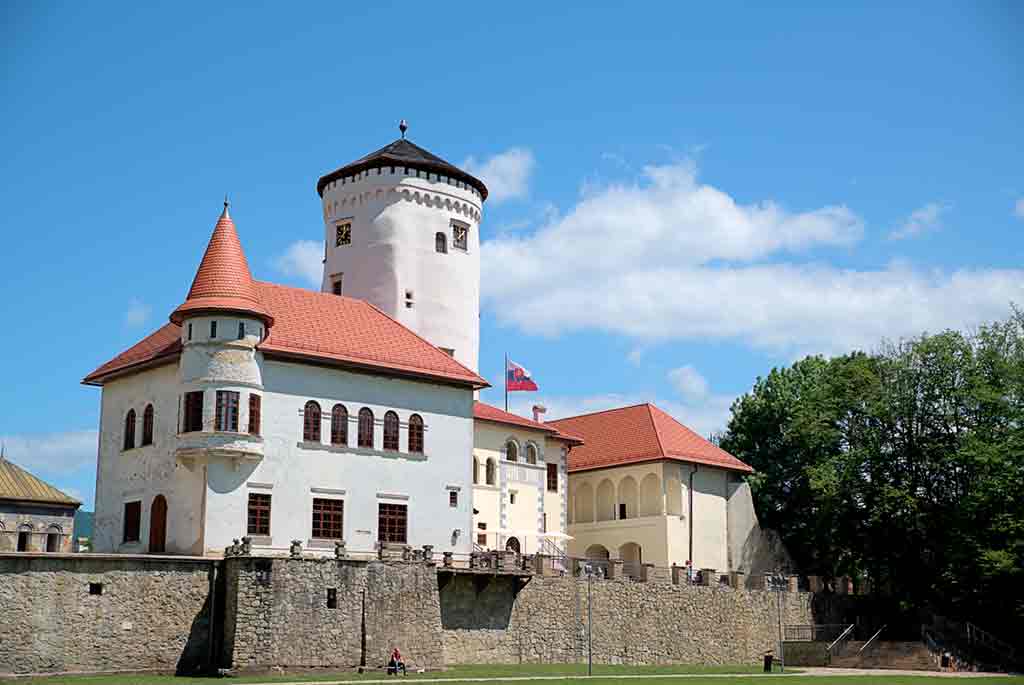
With the original function of being a guarding castle, Budatin Castle was built in the second half of the thirteenth century and was located near to the Kysuca and the Vah, which was where the tolls were collected.
The castle passed hands to Gaspar Sunog in the year 1487 and was later rebuilt into a Renaissance-style castle in the 16th century.
In the 17th century, a chapel was built, and various outbuildings were finished in line with contemporary artistic disciplines.
Where: Near the city of Zilina
When: 13th century
Open for visit: Yes
17. Bytca Castle
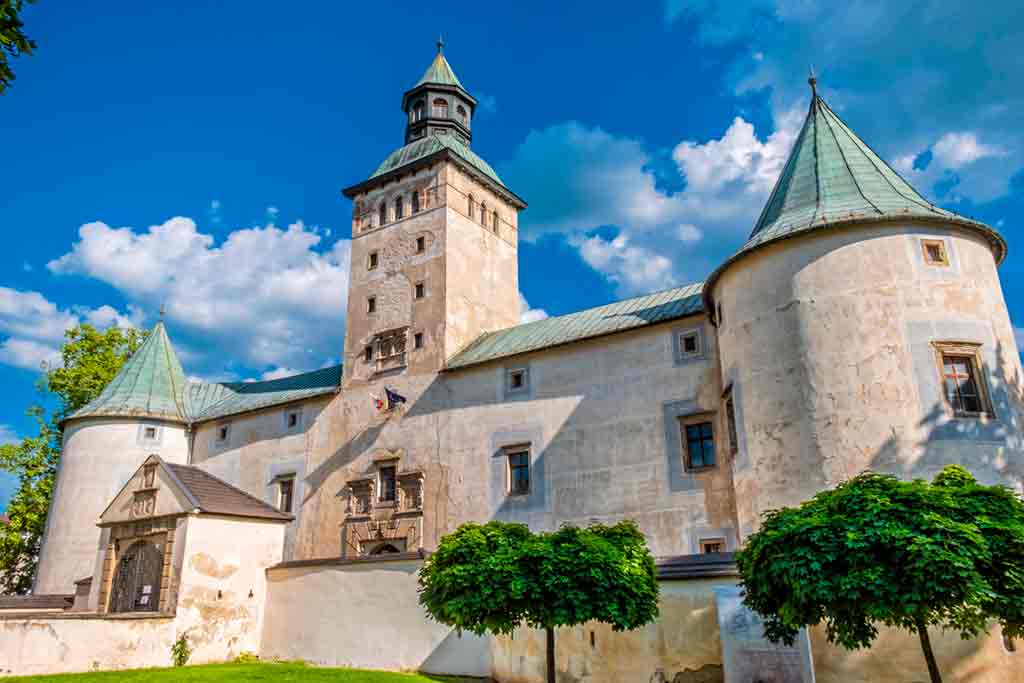
Originally built as a water castle by Pongrac Szentmiklosi, this thirteenth-century masterpiece has undergone several drastic changes since it first began life.
Between the years 1571 and 1574, it was rebuilt in line with the Renaissance style by the architect Ferenc Thurzo and was later added to by Thurzo’s son George, who implemented a Wedding Palace in the year 1601, with the purpose of serving for the weddings of his six daughters.
Today, the castle houses the State District Archive, and visitors are charmed by its vast history.
Where: Bytca
When: 1571
Open for visit: Yes, check here for more information.
18. Kezmarok Castle

This area of this castle is very famous, as it is the point of the first known tourist trip to the surrounding mountain range, but the castle of Kezmarok is famous for its own reasons as well.
The castle was originally built in the Gothic style in the year 1463, with the aim of protecting the medieval community of Svata Alzbeta; Throughout the 16th and 17th centuries, the castle went through a variety of rebuilding and renovations, and followed the principles of Renaissance architecture and artistry.
Where: Kezmarok
When: 1463
Open for visit: Yes, check here for more information.
19. Krasna Horka Castle
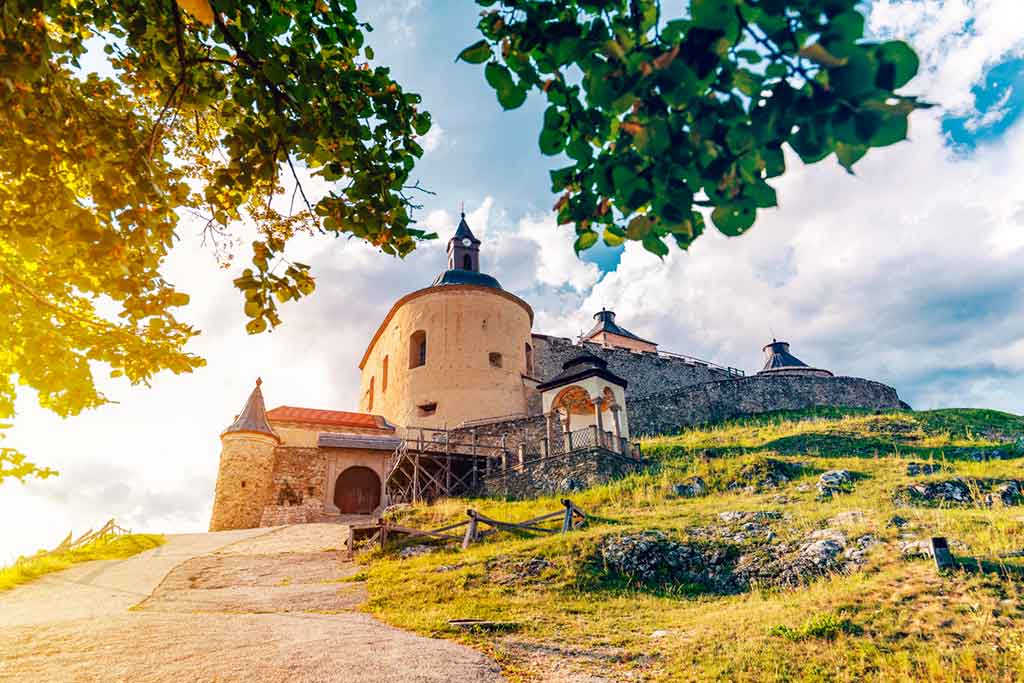
Dating back to the year 1333, Krasna Horka Castle is a fascinating structure that is nestled upon a hilltop overlooking the village of Krasnohorske Podhradie.
The castle was originally built on a trade route from Transylvania through Kosice to Spis and was built by the Hungarian Akos brothers. Sadly, in 2012, the castle was largely damaged by a fire, and the Gothic palace and bell tower were entirely destroyed.
Despite being damaged, the castle is a National Cultural Monument of the Slovak Republic.
Where: Krasnohorske Podhradie
When: 1333
Open for visit: Yes, check here for more information.
20. Kremnica Castle
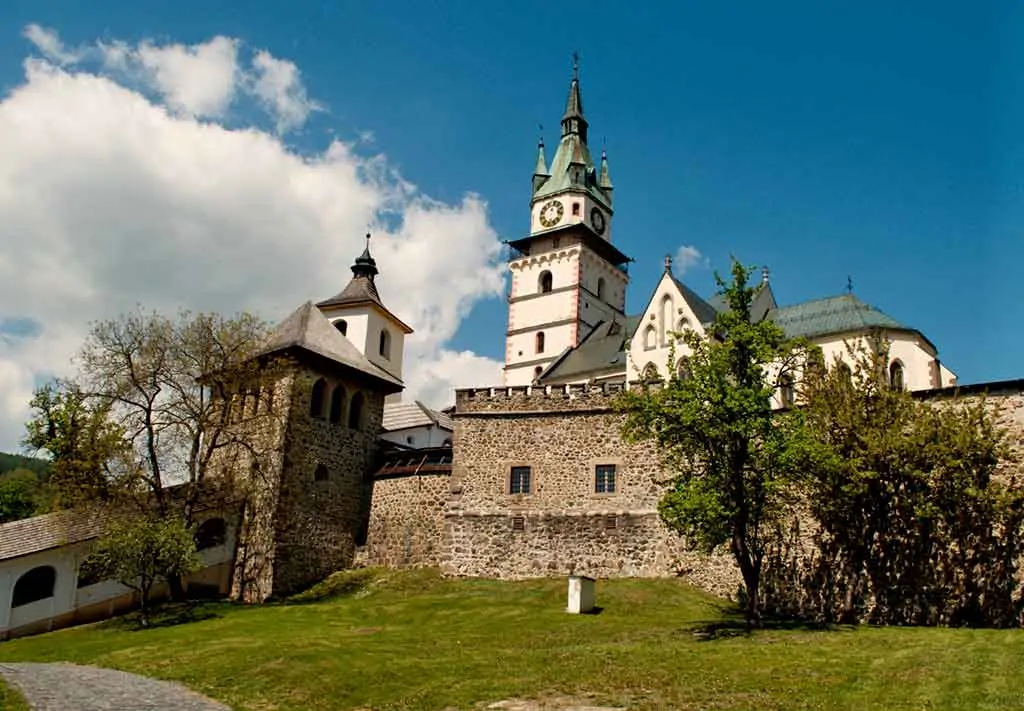
Renowned as being one of the earliest settled locations in the town of Kremnica, the castle consists of a complex of medieval buildings, which were constructed between the 14th and 15th centuries, and it is regarded as one of the most well-preserved fortifications in the whole of Slovakia.
The oldest feature of the castle is the ossuary, which dates back to the 14th century; it is
ocated in the basement and is built in the gorgeous Gothic style. Today, there is a fascinating museum for tourists to visit, as well as occasional historical and artistic expositions.
Where: Kremnica
When: 14th century
Open for visit: Yes
21. Novy Zamok
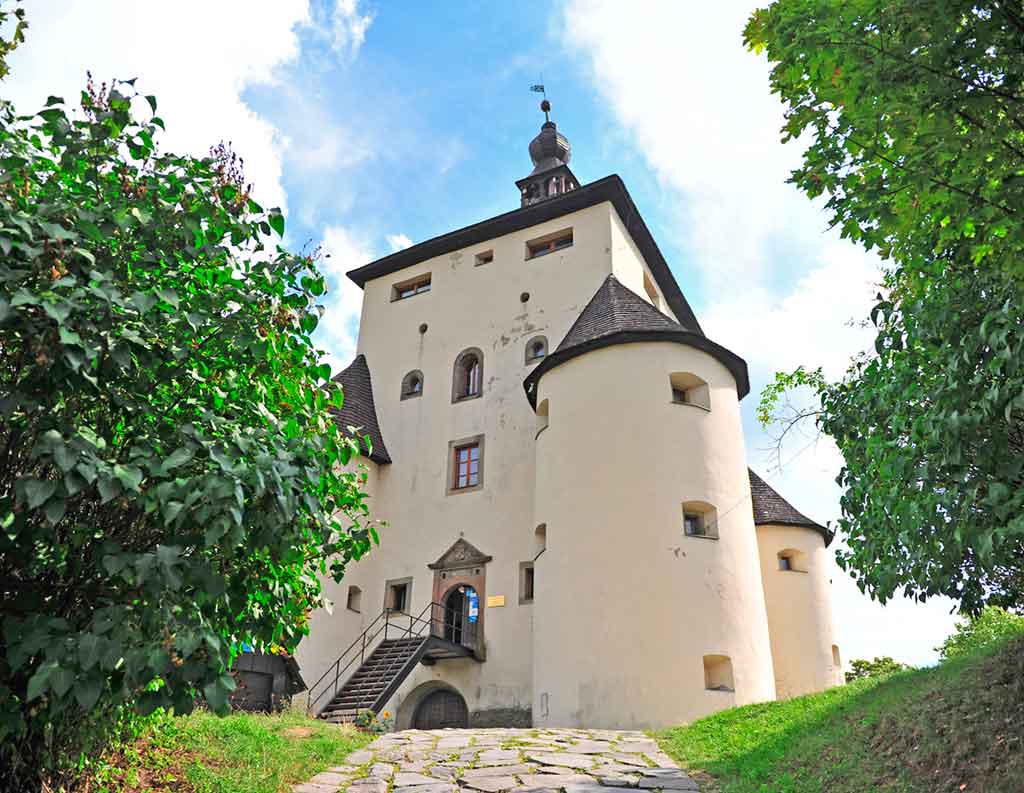
Literally meaning ‘New Castle’, Novy Zamok is located in Banska Stiavnica and towers a whopping 630 meters above sea level, which gives it a powerful presence.
In the year 1541, the town council chose to construct the fortification of Banska Stiavnica, which was to be a national cultural monument and to be an impressive six-floor Renaissance masterpiece, with a total of four bastions.
Another purpose of this castle was to serve as a watchtower during the Ottoman wars, and it was also used as the town’s live clock.
Where: Banska Stiavnica
When: 1564
Open for visit: Yes, check here for more information.
22. Slovenska Lupca Castle
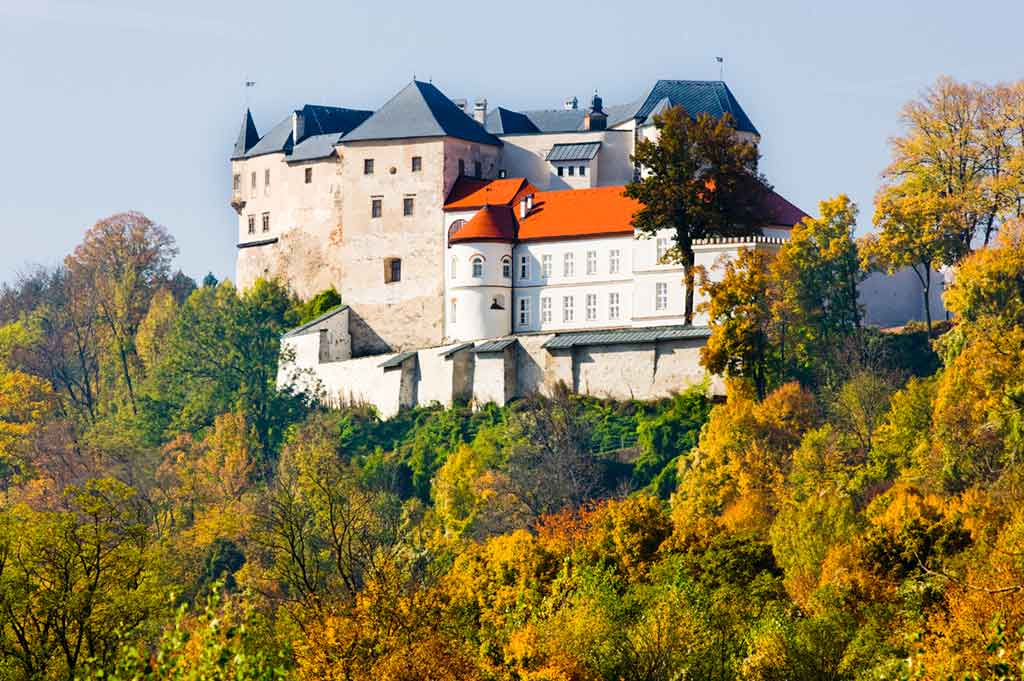
After the invasion of the Tatars in the year 1241, all wooden fortifications were invaded and demolished, and only stone ones survived; Bela IV of Hungary thus decided to build a series of defensive stone structures during the prime of the 13th century, and Slovenska Lupca Castle was one of them.
The castle was a center for the monarchs of the time, who frequented its premises for game hunting in the surrounding forests. During the 13th century, it also became a temporary residence for many Hungarian kings.
Where: Slovenska Lupca
When: 13th century
Open for visit: Yes, check here for more information.
23. Blatnica Castle
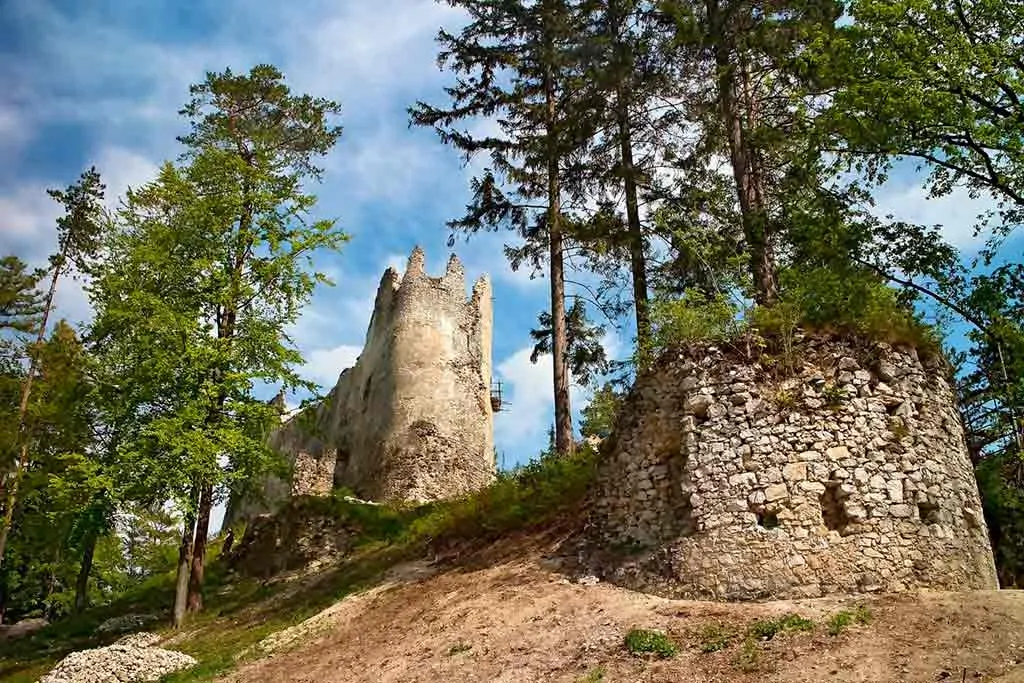
This gorgeous ruinous Gothic castle is located near the village of Blatnica which lies at the foot of the Greater Fatra Range.
It was originally built in the 13th century with the purpose of protecting a large trading route that ran from Nitra to the north, before becoming a royal residence.
However, in the year 1790, the castle abandoned and was left to decline into ruins; yet, visitors still flock to the site, as it offers beautiful views of the surrounding scenery, and the ruins themselves still hold a lot of value.
Where: Blatnica
When: 13th century
Open to visit: Freely accessible
PIN IT!
